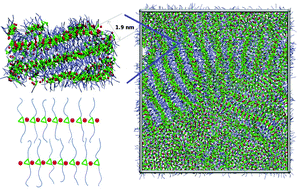Emergence of nanoscale order in room temperature ionic liquids: simulation of symmetric 1,3-didecylimidazolium hexafluorophosphate†
Abstract
The morphology of a room temperature

- This article is part of the themed collection: Dedicated to Professor C. N. R. Rao

 Please wait while we load your content...
Please wait while we load your content...